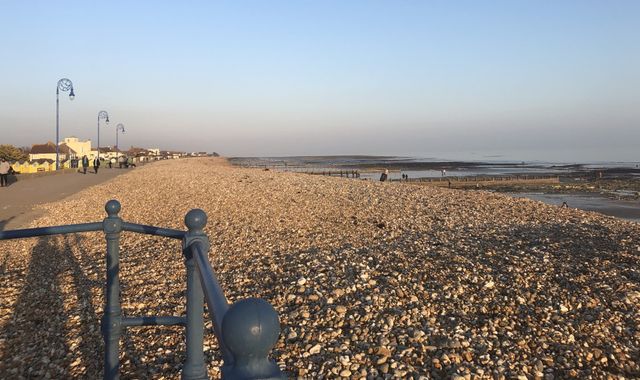Margaret Thatcher: Thirty years on from her Downing Street exit, her legacy lives on
Written by News on 28/11/2020
She was known as the Iron Lady, but Margaret Thatcher dissolved into floods of tears on the day she left Downing Street 30 years ago, on 28 November 1990.

Back then, I was a political correspondent for the Today newspaper and the events leading up to that emotional day were the most dramatic during my nearly 40 years of reporting on politics.
I was one of the journalists in the courtyard of the British embassy in Paris when Mrs Thatcher reacted to the result of the first ballot of the Tory leadership contest which sealed her fate.
As we waited for the result, huddled around a small transistor radio, we held a sweepstake on the voting numbers to pass the time. The numbers were 204 for Mrs Thatcher and 152 for Michael Heseltine with 16 abstentions, not enough to secure victory for her.
“I confirm it is my intention to let my name go forward for the second ballot,” she declared, after her formidable press secretary Bernard Ingham pushed the BBC’s John Sergeant out of way during a live broadcast as her entourage walked down the embassy steps towards us.
But she didn’t contest the second ballot and just over a week later it was all over and John Major had succeeded her as prime minister, having defeated Mr Heseltine and Douglas Hurd in the second round.
A few days after the drama of the embassy courtyard, I was one of the political correspondents patrolling the corridors of the House of Commons on the evening her cabinet trooped into her office one by one and told her the game was up.
Some of her loyalist cheerleaders who urged her that night to fight on are still in the Commons, including Sir Edward Leigh and Sir Christopher Chope. Her then political secretary, John Whittingdale, is a minister in Boris Johnson’s government.
A couple of days before the second ballot, I went to 11 Downing Street to interview Mr Major, then chancellor. He was Mrs Thatcher’s candidate. She was determined to stop Mr Heseltine from succeeding her.
Mrs Thatcher’s last day in office was a Wednesday. In her memoirs, The Downing Street Years, she described how the tears began just after 9am when she said goodbye to No 10 staff before her final audience with the Queen.
“Some were in tears,” she wrote. “I tried to hold back mine, but they flowed freely as I walked down the hall past those applauding me on my way out of office…”
Before going outside she paused to collect her thoughts with her loyal aide and confidante Cynthia Crawford. More tears. “Crawfie wiped a trace of mascara off my cheek, evidence of a tear which I had been unable to check,” Lady Thatcher wrote.
She went outside and, again tearfully, said: “We’re leaving Downing Street for the last time after 11-and-a-half wonderful years and we’re happy to leave the UK in a very much better state than when we came here.”
She waved and got into the car with her ever-faithful husband Denis and a photographer captured the haunting, mournful image of her looking out of the car window that everyone remembers from that historic day.
It had been a tumultuous – and her admirers would say glorious – 11 years: three general election victories, a purge of the Tory “wets”, council house sales, taming the trade unions, privatisation, the Falklands war, the Brighton bomb, the miners’ strike, the poll tax.
It was Mikhail Gorbachev who called her the Iron Lady. Ronald Reagan said she was a “political soulmate” and French President Francois Mitterrand said of her: “She has the eyes of Caligula and the mouth of Marilyn Monroe.”
Her spectacular demise can be traced back to two high-profile resignations, by Sir Geoffrey Howe and Nigel Lawson, prompted by a slump in support for her and the Conservative Party, partly due to the unpopularity of the poll tax, or community charge as she called it, and a split over Europe that still divides the Tories.
Sir Geoffrey quit after Mrs Thatcher humiliated him by demoting him. Once a close ally of Mrs Thatcher, the quiet and usually mild-mannered Sir Geoffrey turned out to be the whispering assassin.
In early November, the under-pressure prime minister had said in her Lord Mayor’s Banquet speech: “I am still at the crease, though the bowling has been pretty hostile of late. And in case anyone doubted it, can I assure you there will be no ducking the bouncers.”
The following day, when word spread around Westminster that Sir Geoffrey was to make a personal statement in the Commons, there was little enthusiasm among political correspondents gathered in the Members’ Lobby.
This, after all, was a politician not known for his inspiring oratory, with his former Labour opponent Denis Healey having described an attack from Sir Geoffrey as “like being being savaged by a dead sheep”.
But upstairs to the Press Gallery we journalists all trudged and we were rewarded by Sir Geoffrey’s blistering riposte to Mrs Thatcher’s Guildhall speech. The dead sheep became a roaring lion.
Describing his treatment by Mrs Thatcher, he said: “It’s rather like sending our opening batsmen to the crease only for them to find that before the first ball is bowled, their bats have been broken by the team captain.”
From my seat in the gallery on the Opposition side of the Commons chamber, looking directly at the government front bench, I watched Mrs Thatcher visibly wince a few times.
“The time has come,” Sir Geoffrey continued, “for others to consider their own response to the tragic conflict of loyalties with which I have myself wrestled for perhaps too long.”
It was the cue for Mr Heseltine to launch his challenge. The seeds of Mrs Thatcher’s downfall had been sown in 1986, when he stormed out of Downing Street and resigned from the cabinet.
Sound familiar? There are similarities between the ousting of Mrs Thatcher – the Tories’ first woman prime minister – by her male colleagues and that of Theresa May by her male colleagues nearly 30 years later.
Both women prime ministers left Downing Street in tears. And both were forced out in a coup prompted by differences over Europe.
The challenger in both cases was a blond assassin who had quit the cabinet and become a king over the water plotting the prime minister’s downfall.
Mr Johnson succeeded where Mr Heseltine failed, losing out to Mr Major and prompting one of the most quoted political clichés of all time: “He who wields the knife never wears the crown.”
Mrs Thatcher’s demise unleashed a ferocious Tory psychodrama over Europe which reached its climax with the EU referendum in 2016.
Since 1990, her disciples have declared war on her successors as Tory prime minister – Mr Major, David Cameron and Mrs May, in a continuing civil war with huge consequences for the Conservative Party and the country.
Opinions are divided about whether Mrs Thatcher would have backed Brexit. Her official biographer Charles Moore says yes, her private secretary in No 10, Charles Powell, says no.
Lord Moore, recently made a peer by Mr Johnson, claims she planned a referendum in 1991 on a single currency. But Lord Powell said that in her time as prime minister she never contemplated or spoke about leaving the EU.
In Harold Wilson’s referendum on Common Market membership in 1975 she had campaigned for Yes. Yet her views towards the EU hardened during her 11 years in power as a result of many battles with European leaders.
In her final weeks as PM, there were moments of great theatre in the Commons.
I was in my Press Gallery seat when she shouted “No, no, no!” in a riposte to a Brussels power grab and dash towards a single currency by European Commission president Jacques Delors.
Then, in the no-confidence debate on the day she resigned, she replied to a heckle from Labour’s Dennis Skinner by telling him with gusto: “I’m enjoying this!”
Two years earlier, in a speech in the Belgian city of Bruges that gave its name to a Brexiteer Tory pressure group, Mrs Thatcher said: “We have not successfully rolled back the frontiers of the state in Britain, only to see them re-imposed at a European level with a European super-state exercising a new dominance from Brussels.”
Now, 30 years after she left Downing Street, the Tories are still bitterly divided over Europe.
Her memory lives on, too, with her photo hanging on the wall of just about every Conservative association office throughout the land.
And she is still loathed by many on the left for the miners’ strike, privatisation, spending cuts and curbs on trade unions.
In 1987, she said controversially: “There is no such thing as society.” And earlier this week, Rishi Sunak closed his spending review statement in the Commons by echoing her words.
The state cannot “mandate or distribute” a thriving society, said the ambitious chancellor who hopes to be the next Tory prime minister. It must “come from each of us”.
Like her memory, Mrs Thatcher’s legacy truly lives on.
(c) Sky News 2020: Margaret Thatcher: Thirty years on from her Downing Street exit, her legacy lives on





